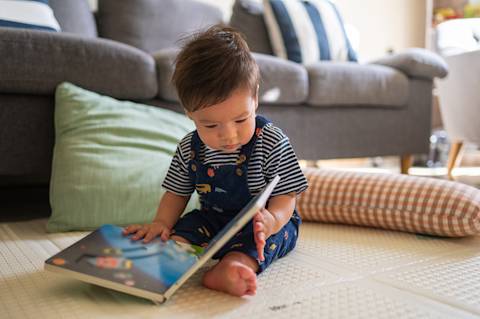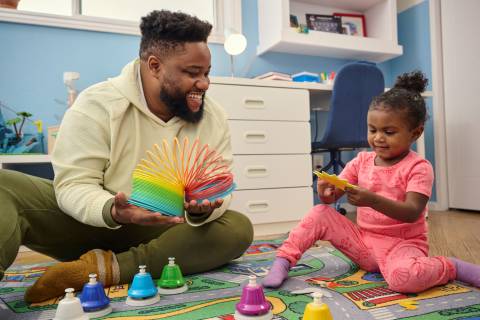Sensory toys are important for helping your child learn and grow through play, as well as helping regulate their emotions when they start to feel overwhelmed. Check out our fun guide to discover how you can create engaging DIY sensory toys from everyday household items to spark your child's curiosity and imagination.

Sensory toys can help children find calm during difficult moments by:
Redirecting their focus: Sensory toys can capture a child's attention, helping them shift their focus from a difficult situation to a calming activity.
Encouraging self-soothing: Engaging with sensory toys can provide sensory information that children can use to soothe themselves during challenging times.
Building coping skills: Sensory toys teach children to explore various sensations and learn to regulate their emotions by identifying what specific activities make them feel calm and in control.
Building emotional resilience: Consistent exposure to sensory toys helps children learn to tolerate and adapt to different sensory experiences, allowing them to handle challenging situations more effectively.
You can make sensory toys with everyday household objects. Remember to supervise your child while they play with these toys, especially when small objects are involved.
Sensory bottles: Fill empty water bottles with materials like glitter, beads, sequins, and a little vegetable oil or baby oil. Seal the cap with hot glue or tape to create an exciting discovery bottle for your child to shake and observe.
Fabric scraps texture board: Attach various fabric scraps such as felt, satin, wool, or faux fur onto a piece of cardboard or canvas board. Encourage your child to explore the different textures and talk about how they feel.
Ice cube painting: Freeze small amounts of washable paint in ice cube trays with a popsicle stick or plastic spoon handle. Once frozen, let your child use the icy paint for a fun and engaging sensory art experience.
Homemade playdough: Combine flour, salt, cream of tartar, water, and food coloring to create a fun, colorful playdough for your child to explore and shape.
Sensory bags: Fill gallon-size plastic bags with materials such as hair gel, water beads, or sand, along with small toys or objects like buttons or plastic animals. Seal the bag tightly, and let your child explore the textures and move the objects around.
Bean or rice box: Fill a large, shallow container with dried beans, rice, or pasta. Add measuring cups, spoons, or small toys for your child to scoop, dig, and engage their senses.
Noodle fun: Cook various types of noodles (spaghetti, fettuccine, bow tie, etc.) and let them cool. Place the noodles in a large container, and let your child touch the unique textures while practicing their fine motor skills.
Scented sensory jars: Fill small jars with various scented items like coffee beans, dried herbs, or cotton balls soaked in essential oils. Seal the jars and poke holes in the lids to create a smell discovery activity for your child.
Bubble wrap stomp: Tape a large piece of bubble wrap to the floor and let your child walk, crawl, or stomp on it for a fun and exciting sensory experience.








